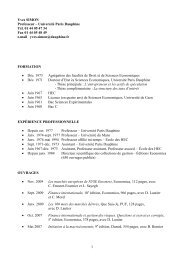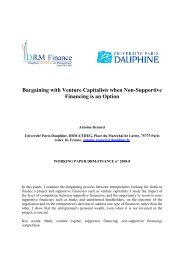Corporate governance and earnings management ... - CEREG
Corporate governance and earnings management ... - CEREG
Corporate governance and earnings management ... - CEREG
Create successful ePaper yourself
Turn your PDF publications into a flip-book with our unique Google optimized e-Paper software.
Mörschel (1933, p. 34) shows that at the time, goodwill was treated in the same way as<br />
advertising expenses, <strong>and</strong> consequently immediate expensing or at least rapid amortization<br />
was required.<br />
This doctrine still held sway in Germany in the 1920s <strong>and</strong> 1930s. Only a few authors, even<br />
in the field of business economics, dared to propose recognition of goodwill followed by<br />
amortization over more than five years (Take, 1939, p. 116). Among the main proponents of<br />
this approach were Schmalenbach (1949), Müller (1915), Schreier (1928), Stern (1907), <strong>and</strong><br />
Schmidt (1927) (on these authors, see Greve, 1933, p. 32; Take, 1939, p. 111-112), all of<br />
whom were in favor of long-term, systematic amortization.<br />
Court rulings<br />
There were relatively few relevant court cases in Germany between 1900 <strong>and</strong> 1931.<br />
According to Greve, the rulings issued were (1933, p. 31), “of the same opinion as the<br />
commentators on the Commercial Code”, which suggests they looked favorably on rapid<br />
expensing/amortization. Only one decision, in 1915 (quoted in Greve, 1933, p. 31), was in<br />
favor of compulsory asset status for acquired goodwill (this status was always refused for<br />
internally generated goodwill). The others (in 1901, 1909 <strong>and</strong> 1914) allowed recognition of<br />
acquired goodwill as an asset but considered it as an “ideal” asset (in the sense of imaginary,<br />
as opposed to a “real” asset) (Greve, 1933, p. 31-36; Mörschel, 1933, p. 34).<br />
b) Second sub-phase, 1931 - 1985: introduction of a law<br />
The second sub-phase saw the introduction of a formal obligation by the German<br />
commercial legislators. It was a period of deep mistrust regarding treatment of goodwill as an<br />
asset, culminating in 1965 with the introduction of compulsory rapid amortization for any<br />
goodwill recorded as an asset. This development in German commercial law was all the more<br />
striking because at around the same time, the courts <strong>and</strong> tax administration were expressing<br />
their opposition to systematic amortization of goodwill.<br />
22



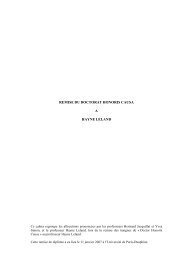

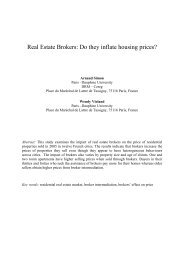
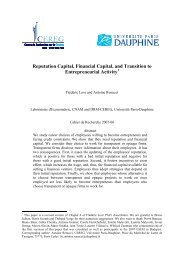

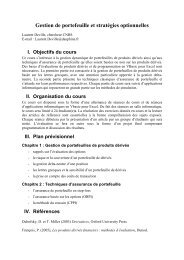



![& 6 ] ^ F ]^ - CEREG - Université Paris-Dauphine](https://img.yumpu.com/33326502/1/184x260/-6-f-cereg-universitac-paris-dauphine.jpg?quality=85)

